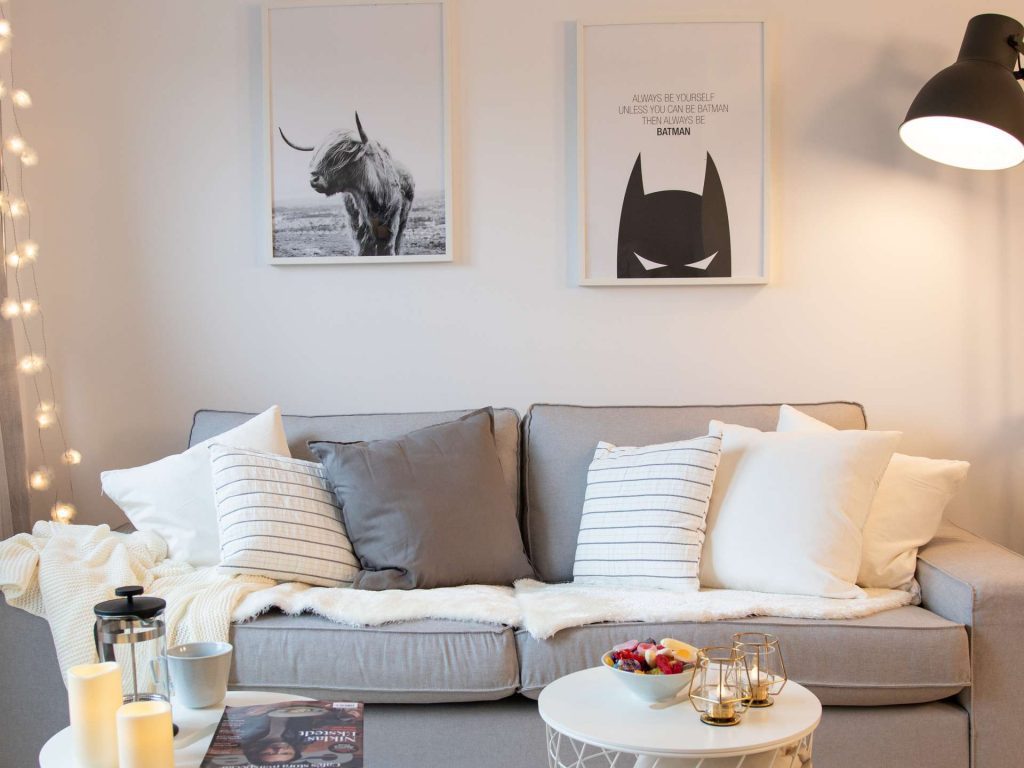

Is it warm in your apartment?
When the temperature rises and the sun shines, it can get warm inside the apartment. We don’t have air conditioning in our properties, only regular ventilation, which means we can’t lower the temperature in your apartment quickly. However, as a tenant, you can try to keep the temperature down with the following tips:
- Use blinds or dark/thick curtains.
- Ventilate in the evening or at night when the temperature is lower. Try to create airflow throughout the apartment if possible.
- Ensure any vents in the apartment are open.
- Remember that computers and electrical appliances generate heat.
- A fan or air conditioning works well to lower the temperature.
The Public Health Agency’s (Folkhälsomyndigheten) common recommendation is that the indoor temperature should be between 20 and 24 degrees. During a heatwave or extremely high temperatures, you might need to accept higher degrees in the apartment. However, this recommendation is set aside during the peak of summer, and when the Swedish Meteorological and Hydrological Institute (SMHI) warns of extremely high temperatures, the Public Health Agency’s general advice doesn’t apply.
Is it cold in your apartment?
When it gets colder outside, especially during rapid temperature changes, it might take some time for the heating system to adjust. But even if the radiators feel cold, it doesn’t necessarily mean that something is wrong; it’s the temperature in the air in the middle of the room that matters.
Here are some tips for the best, possible indoor climate:
- Leave at least a few decimeters of space between the sofa and other large furniture and the radiator. Otherwise, the furniture can block the heat from spreading in the room.
- A table placed by a window can direct cold air via the tabletop into the room while the warm air from the radiator remains underneath the table.
- Thick curtains can be both cozy and stylish. Just make sure they don’t cover the thermostat knob, as it may trick the thermostat into thinking the room is warmer than it is, causing the radiators to turn off.
- The temperature is usually coldest near the floor, so a nice rug can make it feel warmer for your feets.
- Ensure that window vents are open to allow proper ventilation. If they are closed, air will enter through mail slots, windows, and drafty doors, making it harder for the radiators to warm up.
- Turn off the kitchen fan after cooking. The fan otherwise draws out the warmth and replaces it with cold air.
- Turn the thermostat knob back and forth approximately ten times to ensure the valve isn’t stuck in a closed position from the summer. Then set it to fully open.
- Using electric heaters, turning on the oven with the oven door open, or relying on other external heat sources isn’t a good idea to warm up your home. It tricks the heating system into thinking it’s warm enough, preventing the heating system from working as intended.
Uneven heat on the radiator?
It’s not always the entire radiator that’s warm. Is it warmer at the top? Don’t worry, that’s normal. However, if it’s only warm at the bottom and/or if you hear gurgling sounds as if water is flowing inside the radiator, it might need to be vented. We can assist you with that!
If you’ve tried the above tips and still feel cold indoors, we’d like you to measure your indoor temperature. Place the thermometer one meter above the floor in the middle of the room; it should be at least 20 degrees. If it’s lower, contact customer service at +46 13-20 86 60.
Ventilation
For the best indoor environment, it’s important to have open window vents. When they’re open, all the air in your apartment is exchanged every two hours. If the vents are closed or blocked, air seeps in through mail slots or drafts through the windows. This creates negative pressure in the apartment, preventing ventilation. Also, the radiators struggle to heat up this type of airflow, resulting in a lower indoor temperature than necessary during winter. Equally important to letting fresh air in via window vents is allowing ventilation ducts to release air. Therefore, the vents need to be cleaned regularly.
- Vacuum the vent to remove dust.
- Wipe with a damp cloth and possibly a little dish soap.
Airing
Sometimes, you also need to supplement the ventilation system by airing out manually. Here are some tips on smart airing:
- Keep the bathroom door open after a bath or shower.
- Even when you’re doing laundry or have clothes drying, keep the door open.
- Don’t open the kitchen window while cooking; instead, open a window as far away from the kitchen as possible.
- Especially during winter, it’s wise to create cross-ventilation for short periods rather than constant airing by leaving a window slightly open.
Kitchen Fan
Make it a habit to clean the grease filter in the fan at least once a month. Over time, cooking grease accumulates in the filter, causing dust to stick and preventing proper ventilation. It could also be a potential fire hazard. Wash it in lukewarm water with mild dish soap or in the dishwasher.
